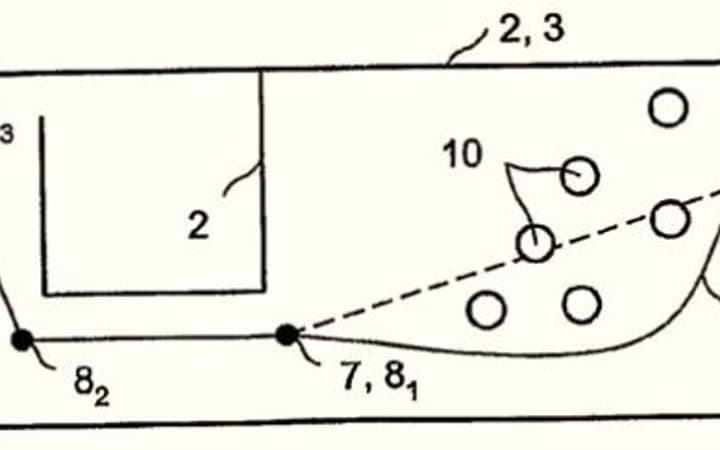G1/19 – Pedestrian Crowd Simulation
Conor Boyce

On March 10, 2021, the EPO Enlarged Board of Appeal issued their decision for case G1/19, following Oral Proceedings held on July 15, 2020.
The Board was responding to questions referred by a Technical Board of Appeal in case T 489/14 resulting from an Examining Division decision to refuse patent application no. 03793825.5 relating to a computer-implemented method for simulating the movement of a pedestrian crowd through an environment as illustrated below:

The method of simulating a pedestrian crowd of the patent specification at issue was reportedly applied to the study and management of crowd flow at Monaco Train Station and at the Sydney Olympics. According to the Monegasque Institute of Statistics and Economic Studies (IMSEE) and INSEE Provence-Alpes-Côte d’Azur, in 2019 approximately 26,700 people travelled into Monaco every day from the Alpes Maritimes department while around 600 Monegasques crossed the border into France for work. Taking account that peak travel is normally concentrated in a few hours each morning and evening, this type of situation clearly presents a challenge including for commuters, for authorities, and for safety – a real-life problem.
Using the method, a designer creates an architectural venue design (2,3), specifies the constituents of a pedestrian population (5,10) that is typical for the venue being designed, and performs a number of microscopic modelling simulations of pedestrian flows (6-9). The simulation results are then examined, and the venue design is revised if necessary.
Despite initially performing a search and examining the application against specific cited art which also related to microscopic modelling of pedestrian flow, after Oral Proceedings, the Examining Division refused the various requests on file principally for being non-technical and without reference to any specific cited art.
The Board in case T 489/14 noted the Appellant’s reference to T 1227/05, Infineon relating to circuit simulation, in which the specific mathematical steps involved in a computer-implemented simulation of an electrical circuit subject to noise were found to contribute to the technical character of the invention and so had to be taken into account when assessing inventiveness.
The Board agreed that if it were to follow T 1227/05, it would have to acknowledge that some or all of the steps of the simulation method contributed to a technical effect and could not be ignored when assessing inventive step. It would then be necessary to compare the invention with prior art other than a general-purpose computer, which the Board noted was available, but was not considered in the decision under appeal.
Usually this would be done by remitting the case to the Examining Division for further prosecution. But, before doing so, the Board noted T 453/91 from which T 1227/05 deviates. In T 453/91, the Board had insisted on the addition of a step of ”materially producing the chip so designed” to a method for designing a chip, because the claims rejected by the Examining Division concerned methods that could be interpreted as delivering a mere design which did not exist in the real world and which could or could not become a real object.
As such, the Board referred the following questions to the Enlarged Board of Appeal:
- In the assessment of inventive step, can the computer-implemented simulation of a technical system or process solve a technical problem by producing a technical effect which goes beyond the simulation’s implementation on a computer, if the computer-implemented simulation is claimed as such?
- If the answer to the first question is yes, what are the relevant criteria for assessing whether a computer-implemented simulation claimed as such solves a technical problem? In particular, is it a sufficient condition that the simulation is based, at least in part, on technical principles underlying the simulated system or process?
- What are the answers to the first and second questions if the computer-implemented simulation is claimed as part of a design process, in particular for verifying a design?
Conor Boyce participated in the preparation of the EPI amicus curiae brief referred to in the Enlarged Board decision and we are gratified that the Enlarged Board has answered these questions incisively and holds that the COMVIK approach for examining computer-implemented inventions set out in case T 641/00 also applies to computer-implemented simulations.
Thus, a computer-implemented simulation of a technical system or process that is claimed as such can, but not necessarily solve a technical problem by producing a technical effect going beyond the simulation’s implementation on a computer.
The Enlarged Board’s answers will now revert to the Technical Board and they will need to look at each of the pending requests to determine if any of these involve specific features which might produce a technical effect. If so, the features of those claims will need to be compared against the cited art using the COMVIK approach to determine if they are indeed inventive. It is not clear at this stage whether, given the importance of the matter, the Board will take on this analysis themselves, or if they will simply revert the application to the Examining Division, perhaps signalling the features of the claims which need to be taken into account when assessing inventiveness.
As such, this particular matter will run for some time yet, but in the meantime, as a result of cases such as T 0359/11 handled by this firm, EPO Guidelines for Examination are such that the instances in which searches are not performed because a computer implemented invention is not regarded as having technical character are extremely limited and instead Examiners are encouraged to search inventions where possible and to examine claims against specific cited documents, rather than using a vague assertion of the extent of common general knowledge. Such an approach would perhaps made for increased procedural efficiency in the present case.
In general, G1/19 and T 641/00 teach that Applicants must be in a position to point to specific features of their claims which achieve some form of technical effect vis-à-vis cited art, rather than vaguely asserting that a claim as a whole should somehow be regarded as subject matter susceptible to patentability. This necessarily involves a close understanding the subject matter of the invention and its distinction from the cited art.
For further information, please contact Conor Boyce.






